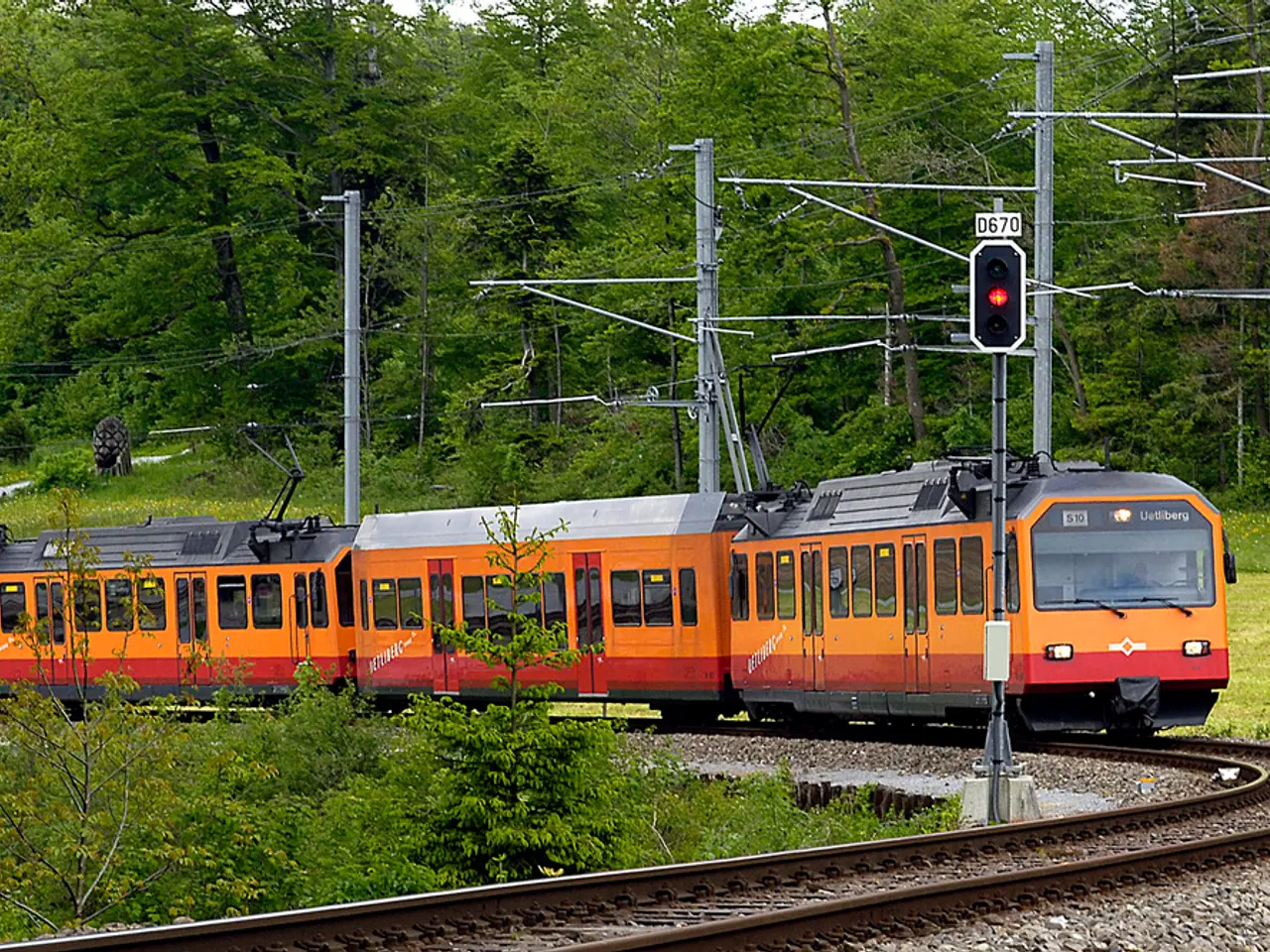Revolutionizing transportation in the unruly Wild West: The Impact of Magnetic Fields
In the realm of transportation, magnetic field technologies are playing a significant role in shaping the future. Maglev trains, electric vehicles, and Hyperloop systems are all leveraging these technologies to offer speed, efficiency, and environmental benefits over traditional modes.
Speed
Maglev trains, by eliminating physical contact with tracks through magnetic levitation, can reach speeds exceeding 370 mph (595 km/h), with China recently unveiling a maglev tunnel buffer to reduce aerodynamic noise at high speeds without extra construction costs. Hyperloop systems take this concept further by operating inside near-vacuum tubes, allowing pods to reach theoretical speeds up to around 760 mph (1,220 km/h). Electric vehicles, while constrained by road transport, still optimize acceleration and top speeds through the use of magnetic fields in their electric motors.
Efficiency
The reduction of friction in Maglev and Hyperloop systems, and the advanced propulsion systems in electric vehicles, leads to improved energy efficiency. Maglev systems, despite requiring superconducting magnets that require cooling, are becoming cheaper and less energy-intensive with technological advancements. Electric vehicles, on the other hand, utilize magnetic motors that convert electricity to motion with high efficiency and recover energy during braking, improving overall energy usage.
Environmental Impact
Maglev trains and Hyperloop systems reduce greenhouse gas emissions by requiring less energy per kilometer traveled and by potentially replacing short-haul flights and car trips, which are more polluting per passenger. The quiet operation of these systems also reduces noise pollution compared to conventional trains and airplanes. Hyperloop's solar-powered model aims at near-zero emissions with significantly lower air and noise pollution and reduced roadway congestion. Electric vehicles produce zero tailpipe emissions, contributing to cleaner urban environments when charged with renewable energy sources.
In summary, the use of magnetic field technologies in these transport modes enables frictionless or low-friction travel at high speeds, leads to greater energy efficiency through reduced drag and advanced propulsion systems, and lowers environmental impact by decreasing emissions and noise pollution—all contributing to a potentially transformative shift in how people and goods move.
Electric vehicles employ electric motors to convert electrical energy into motion, while Hyperloop systems use magnetic levitation and magnetic repulsion for propulsion, reducing friction and enabling high speeds without relying on fossil fuels. As technology advances, we can expect Hyperloop systems to become more efficient and sustainable, shaping the future of mobility. Maglev trains use electric current flowing through a coil to generate a magnetic field, and electric vehicles often use permanent magnet synchronous (PMS) motors to harness magnetic fields for propulsion.
References:
- BBC News
- The Conversation
- CNBC
- Hyperloop One
The industry's investment in magnetic field technologies, particularly in electric vehicles and Hyperloop systems, is driven by the potential for increased speed, as demonstrated by Maglev trains reaching speeds exceeding 370 mph and Hyperloop pods reaching theoretical speeds of 760 mph.
The advancements in these magnetic field technologies also have a profound impact on finance, with the increased efficiency of Maglev and Hyperloop systems leading to reduced energy consumption and operational costs, while electric vehicles offer high energy recovery during braking and optimized energy usage overall.




